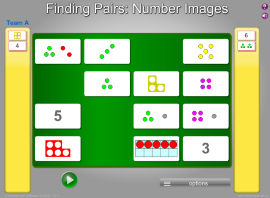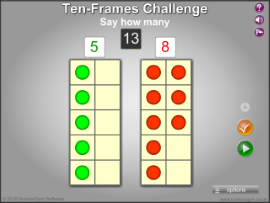no distractions.
Brilliant User Guide tips
by Ian Sugarman.
Great Turtle Race!
Schools: from £95 p.a
Family/Tutor: £55 p.a.
What is Early Maths?
"What humans do with the language of mathematics is to describe patterns... To grow mathematically children must be exposed to a rich variety of patterns appropriate to their own lives through which they can see variety, regularity, and interconnections."
Lynn Steen, from 'On the Shoulders of Giants: New Approaches to Numeracy'
Early Maths caters for both pre-school and infant departments: Foundation and Key Stage 1.
Designed by Ian Sugarman, the activities explore number and pattern through clear images: dot patterns, number rods, stick patterns, counters and pattern blocks.
This software has been designed to be used alongside physical sticks, counters and pattern blocks and encourages the use of language to describe and compare number shape and pattern.
NOTE: As we continue the conversion our Flash programs to html5, converted Early Maths programs will appear in The NEW Number Gym.
Take a trial?
 |
This program uses a variety of images of small numbers that are designed to exploit children’s capacity to subitise the quantity rather than count each object: Familiar dice or domino images The five-rack images that highlight the "5 and something" structure of numbers Numicon images Can be played with cards face-up or face-down and a choice of number ranges. |
|
| Here we show a range of ten-frame images to encourage students to recognise (subitise) 5s, 10s and small numbers in general. Manual mode: Click the green button to show an image. Ask the students to say how many counters are shown. Click the tick button to verify the total. Automated session mode: Use the options slide bar to choose how many seconds to show the image before the total is revealed. Stage 1 shows standard arrangements: filling a five line first. Stage 2 shows other arrangements, often making use of doubling and symmetry. |
 |
|
